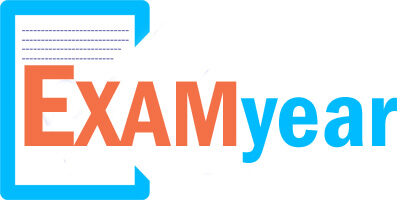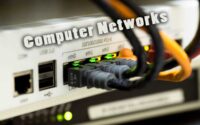Operating System Previous Year Questions and Answers
The Free download links of Operating System Previous Year Questions and Answers Papers enclosed below. Candidates who are going to start their preparation for the Operating System Previous Year papers can use these links. Download the Operating System Previous Year Papers PDF along with the Answers. Operating System Previous Year Papers are updated here. A vast number of applicants are browsing on the Internet for the Operating System Previous Year Question Papers & Syllabus. For those candidates, here we are providing the links for Operating System Previous Year Papers. Improve your knowledge by referring the Operating System Previous Year Question papers.

Previous Year Questions and Answers on Computer Networking
1. Windows is a (n)
(a) O.S
(b) Operating environment
(c) User interface
(d) programming platform
2. Micro computer O.S are generally
(a) copy protected
(b) not loaded into the ROM by hardware manufacturers
(c) easily available in the market
(d) all of the above
3. The part of the computer system which performs the house keeping functions is called
(a) Interpreter
(b) O.S.
(c) Compiler
(d) Assembler
4. An O.S designed to run on only one family of computers is called
(a) PC-DOS
(b) Disk Operating System
(c) CP/M
(d) Proprietary O.S.
5. An operating System
(a) is not required on large computers.
(b) is always supplied with the computer.
(c) is always written in BASIC.
(d) consists of programs that help in the operation of computer.
6. A proprietary O.S can run on machines made by
(a) different vendors
(b) IBM only
(c) a specific vendor
(d) none of the above
7. The relationship between O.S software and application software is that
(a) application software monitors O.S.
(b) O.S monitors application software.
(c) application software and O.S work independently.
(d) the relationship depends upon kinds of O.S and application software.
8. The most popular 16-bit operating system is
(a) CPM
(b) MS-DOS
(c) UNIX
(d) TRS-DOS
9. DOS is
(a) a software
(b) a data organisation system
(c) a hardware
(d) none of the above
10. A computer program written into a storage medium from which it cannot be accidentally erased is called
(a) Software
(b) OS
(c) Firmware
(d) ROM
11. The first popular μC operating system developed around 1974 is
(a) PC-DOS
(b) Apple-DOS
(c) MS-DOS
(d) CP/M
12. A micro computer operating system which is popular with computer professionals and which can support multitasking is
(a) MS-DOS
(b) UNIX
(c) CP/M
(d) OS
13. The two most popular O.S. for 8-and 16-bit personal computers are
(a) CP/M and CP/M-80
(b) MS-DOS and PC-DOS
(c) CP/80 and MS-DOS
(d) MS-DOS and UNIX
14. UNIX operating system
(a) is multi user
(b) can run on Pcs and larger systems
(c) is multi tasking
(d) all of the above
15. An operating system for a large computer is
(a) always supplied by the computer supplier
(b) developed by the actual buyer
(c) developed by the actual user
(d) supplied by software vendors
16. Which of the following is not an O.S
(a) UNIX
(b) PASCAL
(c) MS-DOS
(d) CP/M
17. XENIX can be used only with
(a) IBM-PCs
(b) Super Computers
(c) IBM-PC/XTS
(d) IBMPC/A/TS
18. The application package is used to
(a) meet specific needs of a user
(b) run the compiler smoothly
(c) run the computer system better
(d) enable O.S to control hardware better
19. The part of the computer system which performs the house keeping function is called
(a) Interpreter
(b) Operating system
(c) Compiler
(d) Assembler
20. A Computer program written in a high level language is called a
(a) Source program
(b) Machine language program
(c) Object program
(d) None of the above
| Practice Questions | Objective Papers |
| Quiz | Important Questions |
| Mock Test | Previous Papers |
| Typical Question | Sample Papers |
| MCQs | Model Papers |
21. Compiler can diagnose
(a) grammatical errors only
(b) professional programmers
(c) logical errors only
(d) system analysis
22. Compilers are generally written by
(a) Computer manufacturer
(b) Professional programmers
(c) Computer users
(d) System analysis
23. A programmer, Y mistake, writers and instruction to divide, instead of a multiply, such error can be detected by a/an
(a) Compiler
(b) compiler or interpreter both
(c) interpreter
(d) neither compiler nor interpreter
24. Memory is
(a) a device that performs a sequence of operations specified by instructions in memory.
(b) the device where information is stored.
(c) a sequence of instruction.
(d) typically characterized by interactive processing and time slicing of the CPU’s time to allow quick response to each user.
25. A Program is
(a) a device that performs a sequence of operations specified by instruction in memory
(b) the device where information is stored
(c) a sequence of instructions
(d) typically characterized by interactive processing and time of the CPU’s time to allow quick response to each user
26. A processor is
(a) a device that performs a sequence of operations specified by instructions in memory
(b) the device where information is stored
(c) a sequence of instructions.
(d) typically characterized by interactive processing and time of the CPU’s time to allow quick response to each user
27. Virtual memory is
(a) is a method of memory allocation by which the program is subdivided into equal portions, or pages and core is subdivided into equal portions or blocks.
(b) consists of those address that may be generated by a processor during execution of a computation.
(c) is a method of allocating processor time.
(d) allows multiple programs to reside in separate areas of core at the time.
28. Paging
(a) is a method of memory allocation by which the program is subdivided into equal portions, or pages and core is subdivided into equal portions or blocks.
(b) consists of those addresses that may be generated by a processor during execution of a computation.
(c) is a method of allocating processor time.
(d) allows multiple programs to reside in separate axes of core at the time.
29. The Memory Buffer Registered (MBR)
(a) is a hardware memory device which denotes the location of the current instruction being executed.
(b) is a group of electrical ckt (hardware), that performs the intent of instructions fetched from memory.
(c) contains the address of the memory location that is to be read from or stored into.
(d) contains a copy of the designated memory location specified by the MAR after a “read” or the new contents of the memory prior to a “write”.
30. The memory Address Register
(a) is a hardware memory device which denotes the location of the current instruction being executed.
(b) is a group of electrical ckt, that performs the intent of instructions fetched from memory.
(c) contains the address of the memory location that is to be read from or stored into
(d) contains a copy of the designated memory location specified by the MAR after a “read” or the new contents of the memory prior to a “write”.
31. The instruction register
(a) is a hardware memory device which denotes the location of the current instruction being executed.
(b) is a group of electrical ckt (hardware), that performs the intent of instructions fetched from memory.
(c) contains the address of the memory location that is to be read from stored into.
(d) contains a copy of the designated memory location specified by the MAR after a “read” or the new contents of the memory prior to a “write”.
32. A base register table
(a) allows the programmer to write base registers and displacements explicitly in the source program.
(b) is used to remember which of the general purpose registers are currently available as base registers, and what base addresses they contain.
(c) allows multiple programs to reside in separate areas of core at the same time.
(d) is a term that refers to the control programs of an O.S.
33. Addressing Structure
(a) defines the fundamental method of determining effective operand addresses.
(b) are variations in the use of fundamental addressing structure or some associated actions which are related to addressing.
(c) performs indicated operations on two fast registers of the machine and leave the result in one of the registers.
34. Addressing modes
(a) defines the fundamental method of determining effective operand address.
(b) are variations in the use of fundamental addressing structure or some associated actions which are related to addressing.
(c) both (a) and (b) above
(d) none of the above
35. Register-to-Register (RR) instructions
(a) have both their operands in the main store.
(b) are variations in the use of fundamental addressing structures or some associated actions which are related to addressing.
(c) performs indicated operations on two fast registers of the machine and leaves the result in one of the registers.
(d) all of the above.
36. Register-to-Register (RS) instructions
(a) have both their operands in the main store.
(b) performs an operation on a register operand and an operand which is located in the main store, generally leaving the result in the register, expect in the case of store operation when it is also written into the specified storage locations.
(c) performs indicated operation on two fast registers of the machine and have the result in one of the registers.
(d) all of the above.
37. The storage-to-storage instructions
(a) have both their operands in the main store.
(b) performs an operation on a register operand and an operand which is located in the main store, generally leaving the result in the register, expect in the case of store operation when it is also written into the specified storage location.
(c) performs indicated operation on two fast registers of the machine and have the result in one of the registers.
(d) all of the above
38. Which policy replaces a page if it is not in the favoured subset of a process pages ?
(a) LRU
(b) Working set
(c) FIFO
(d) LFU
39. In which of the storage placement strategies a program is placed in the smallest available hole in the main memory?
(a) best fit
(b) worst fit
(c) first fit
(d) buddy
40. Which of the following statements is false
(a) Protection in segmentation systems is more natural than it is in paging systems.
(b) Sharing is more natural in segmentation systems than in paging system.
(c) Associative memory speeds up the dynamic address translation.
(d) Every cell of the associative memory is searched sequentially.
41. Banker’s algorithm for resource allocation deals with
(a) dead lock preventation
(b) deadlock recovery
(c) deadlock avoidance
(d) mutual exclusion
42. What problem is solved by Dijkstra’s banker’s algorithm?
(a) Mutual exclusion
(b) Deadlock avoidance
(c) Deadlock recovery
(d) Cache coherence
43. Which of the following operating systems are written through caches ?
(a) UNIX
(b) DOS
(c) ULTRIX
(d) XENIX
44. Moving process from main memory to disk is called
(a) Scheduling
(b) Swapping
(c) Caching
(d) Spooling
45. Producer consumer problem can be solved using
(a) Semaphore
(b) Monitors
(c) event counters
(d) all of the above
46. Situation where two or more processes are reading or writing some shared data and the final result depends on who runs precisely when are called
(a) race condition
(b) mutual exclusion
(c) critical section
(d) message passing
47. The main function of the dispatcher is
(a) swapping a process to the disk.
(b) assigns ready process to the CPU.
(c) suspending some of the processes when the CPU load is high.
(d) bring processes from the disk to the main memory.
48. In order to allow only one process to enter its critical section, binary semaphore are initialized to
(a) 0
(b) 1
(c) 2
(d) 3
49. A relationship between processes such that each has some part (critical section) which must not be executed while the critical section of another is being executed, is known as
(a) Semaphore
(b) Multiprogramming
(c) mutual exclusion
(d) multitasking
50. Which of the following program is not utility ?
(a) Debugger
(b) Spoiler
(c) Editor
(d) All of the above



